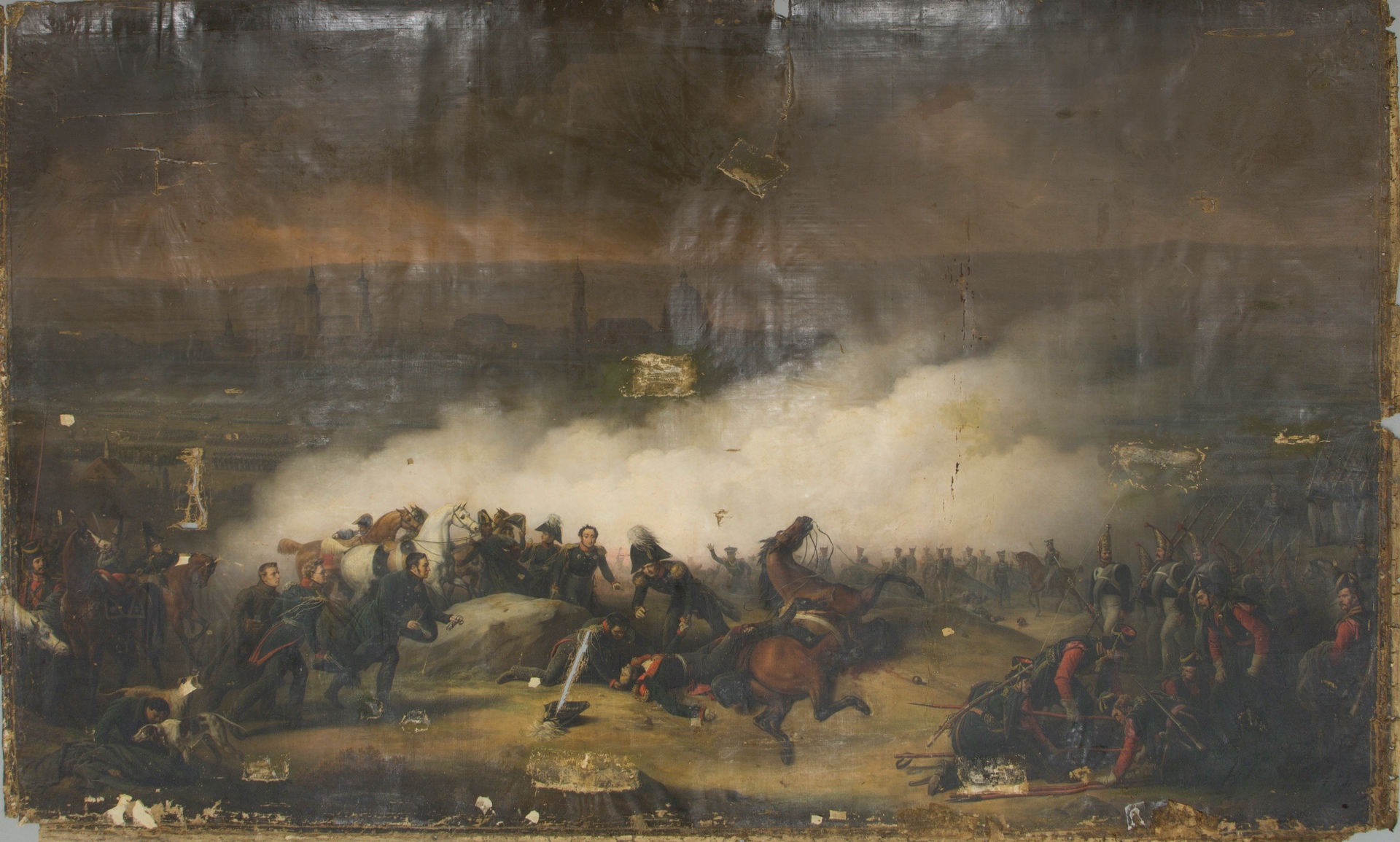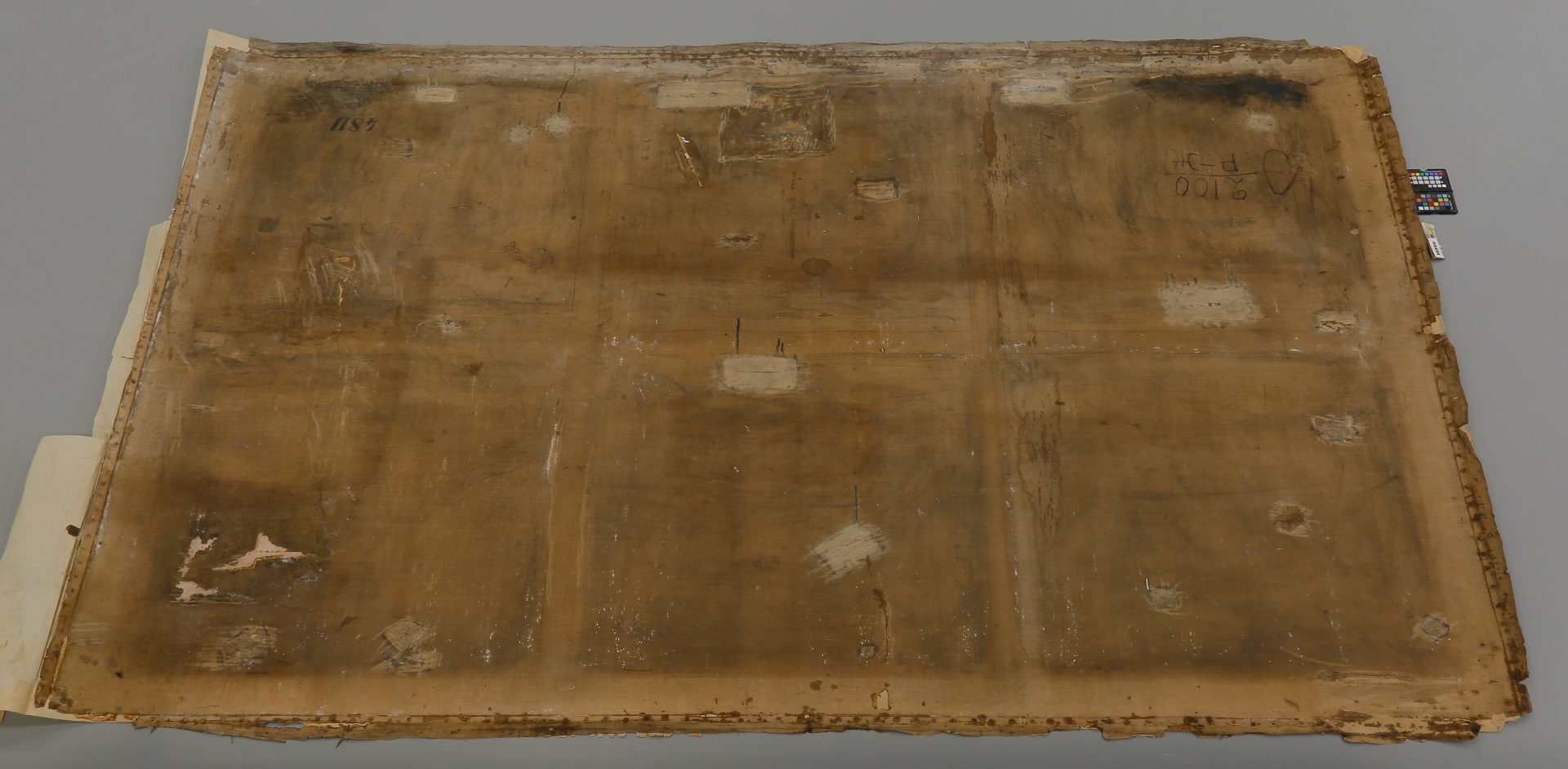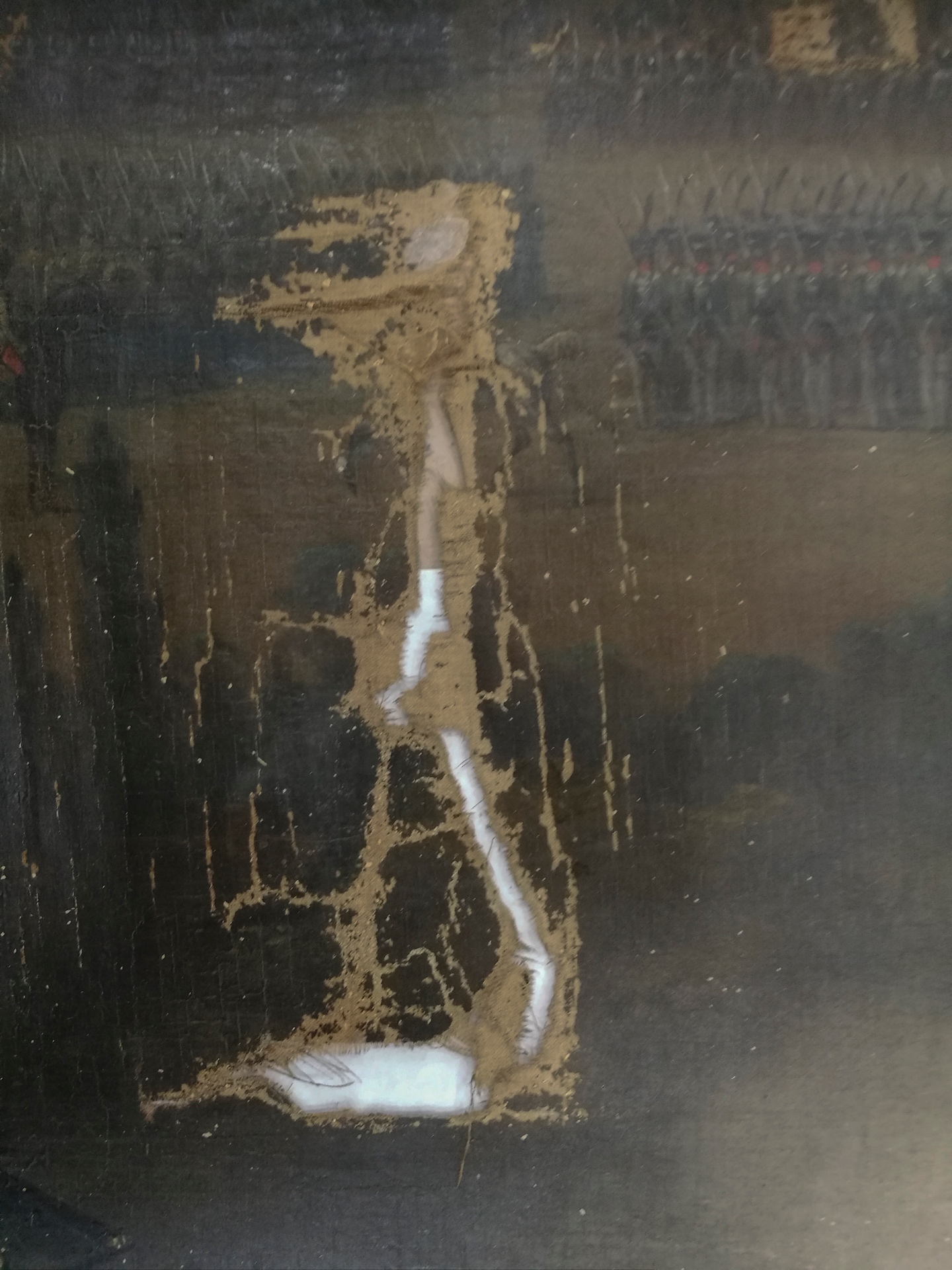Project for the restoration of Carl von Steuben’s painting "The Fatal Wounding of General Moreau"

The History of the Painting
Jean Victor Moreau (1763–1813) was a general of the First French Republic, a participant in the coup of 18 Brumaire, victor of the Battle of Hohenlinden in 1800. He was accused of treasonous conspiracy by Napoleon and given a prison sentence, which was commuted to exile. From 1805 he lived in the USA. In 1813, he joined the war against Napoleon, acting as an advisor attached to the headquarters of the allied monarchs.
The subject of the painting is connected with the last days in Moreau’s life. In the Battle of Dresden on 15 (27) August 1813, Moreau lost a leg to a cannonball and died of his wounds on 2 (14) September that same year.
The State Hermitage collection is famed for its large-format battle pictures that were specially created by Russian and foreign battle painters (Peter von Hess, Bogdan Willewalde, Alexander von Kotzebue, Nikolai Dmitriyev-Orenburgsky and others) to commissions from Nicholas I, Alexander II and Alexander III. In the 19th century, many of these works hung in the Halls of War Paintings in the Winter Palace, but at the present time the main problem is the difficulty of exhibiting them due to the large size of pictures belonging to this genre. The opening of the Exchange building in 2025 will provide the opportunity to display the finest battle paintings, among which is The Fatal Wounding of General Moreau by the French artist Carl von Steuben. This work has never been published. In the 1950s it was wrapped onto a roller, and since then it has been inaccessible to the general viewer. Its restoration and subsequent display in the central hall of the Exchange would represent a significant contribution to the recreation of the imperial collection of battle paintings.
State of Preservation
The canvas is dilapidated, thin, with deformations and creases. The edges of the original canvas are torn with some losses. The support has many tears of various shapes, in places with losses of canvas. At the sites of old tears, various losses of the primer and paint layer can be observed, some of which are due to old patches applied with strong glue. On the surface of the picture, numerous broad instances of overpainting and repainting of various dates can be found, and these have darkened. The painting lies beneath layers of old varnish that have yellowed and form an uneven coating. There are many minor instances of the paint layer and primer flaking off around the perimeter and on separate parts of the picture. There is cleavage between the primer and the paint layer and cracking of varying character across the entire surface.
The project envisages the implementation of the following restoration measures:
Already carried out:
- Removal of the painting from the roller;
- Removal of prophylactic sealings.
To be performed:
- Drawing up of restoration documentation;
- Photographic recording of the painting at all stages of the restoration process;
- Optical-physical and chemical studies;
- Reinforcement of the paint layer across the whole surface;
- Removal of stiff deformations of the canvas;
- Closing the tears in the support;
- Preparing a backing canvas and attachment to the new canvas;
- Removal of surface soiling;
- Preparing a stretcher;
- Stretching the painting on the new stretcher;
- Application of restoration primer in areas where the paint layer has been lost;
- Regeneration of the varnish;
- Development of methods for reducing and evening out the thickness of the old varnish and for removing later overpaintings;
- Layer-by-layer reduction of the coats of varnish across the whole surface of the painting;
- Removal of old overpaintings that broadly conceal the original artist’s work;
- Application of restoration primer in areas of losses, reinforcement across the whole surface;
- Repeat regeneration of the reduced-thickness layer of varnish across the whole surface of the painting;
- Coating the painting with fresh varnish;
- Making good the losses in the original paintwork.
A working group for the restoration of the painting has been formed from the staff of the State Hermitage:
Scholarly supervisor – Yu.Yu. Gudymenko, leading researcher in the Department of the History of Russian Culture
Project co-ordinator – Ye.V. Feodorov, head of the Project Finance Sector
Project curator – V.A. Korobov, head of the Laboratory for the Scientific Restoration of Easel Paintings
Artist-Restorers from the Laboratory for the Scientific Restoration of Easel Paintings – V.Yu. Brovkin, A.S. Nikolsky and A.V. Tsvetkov.

